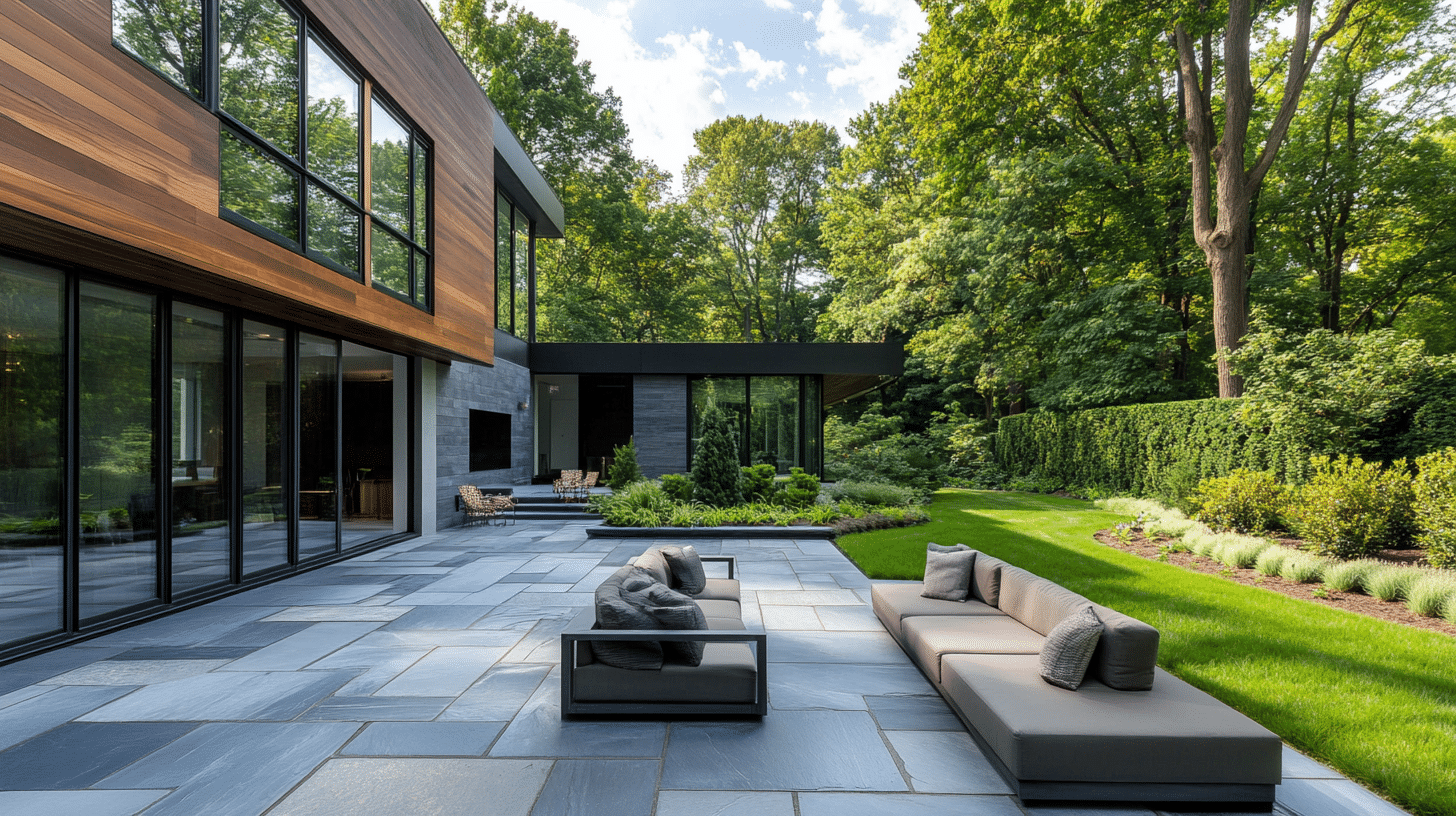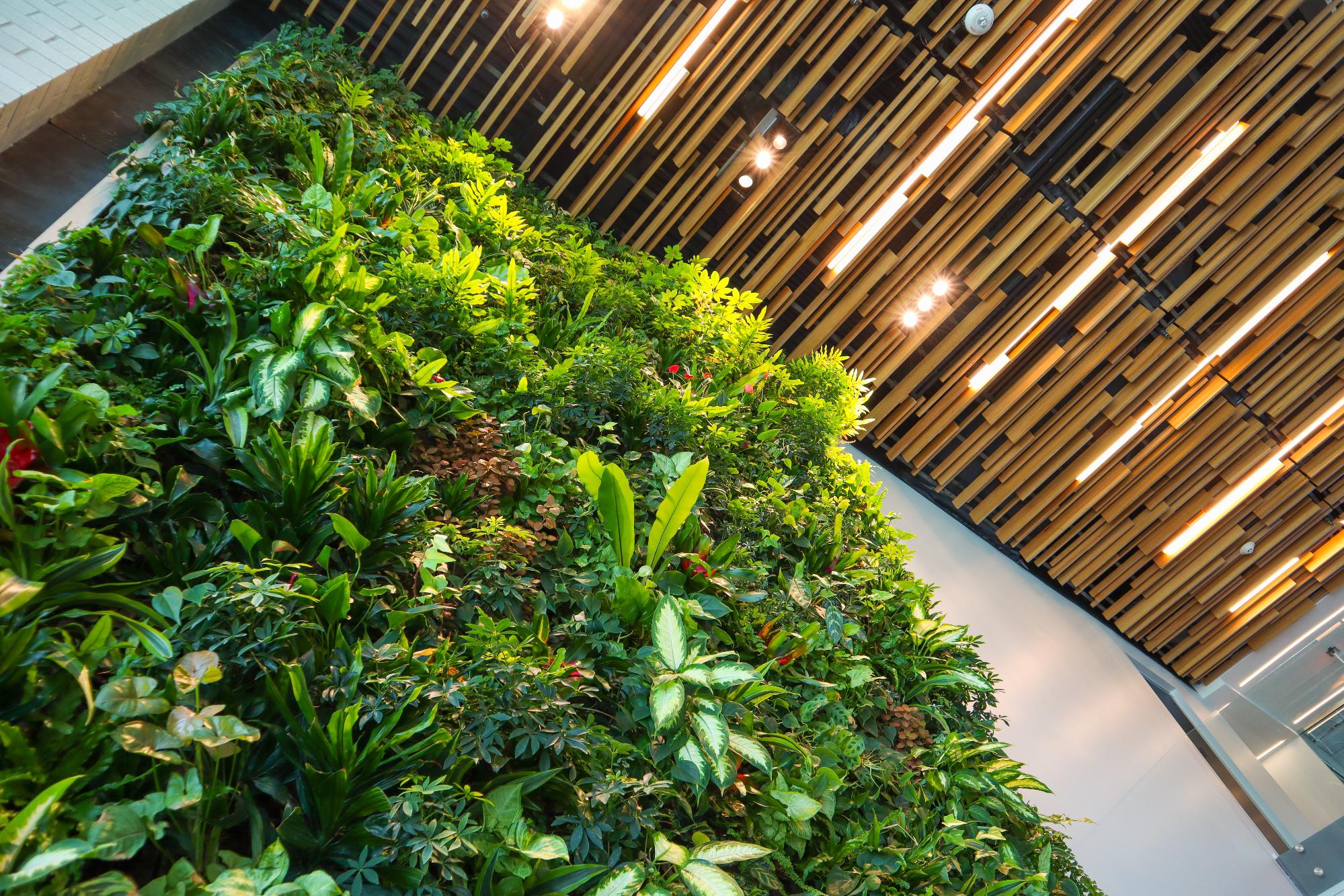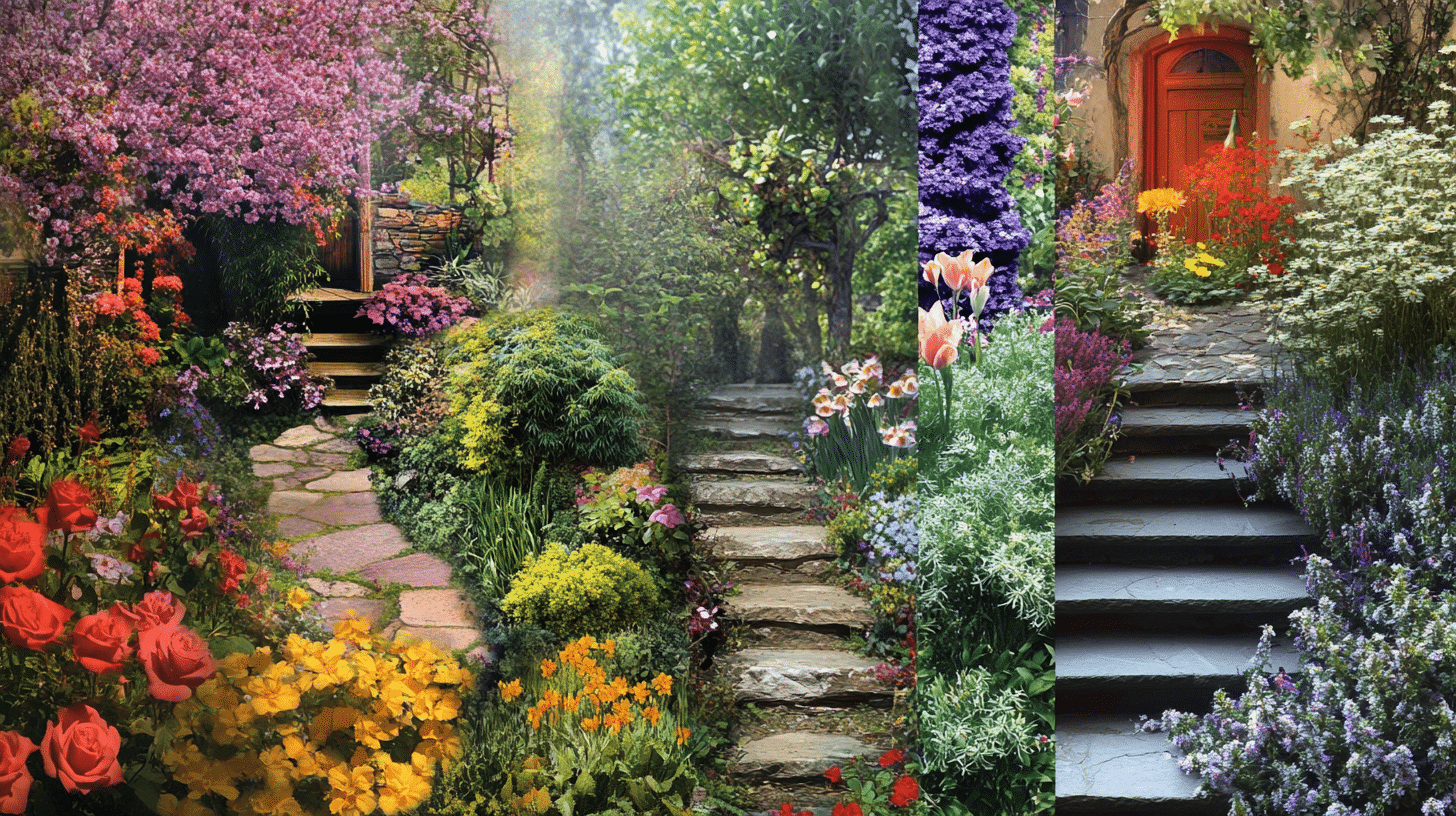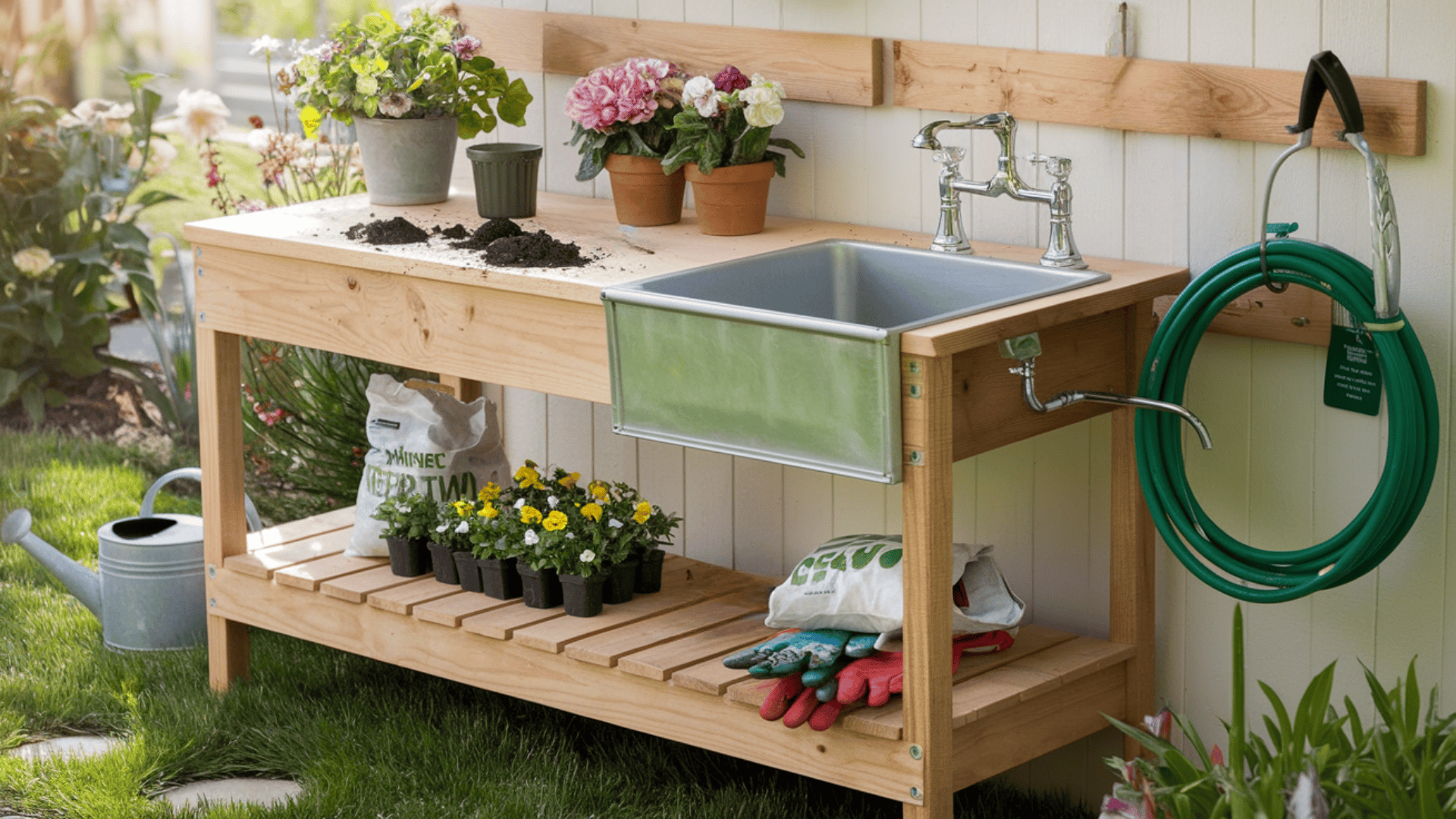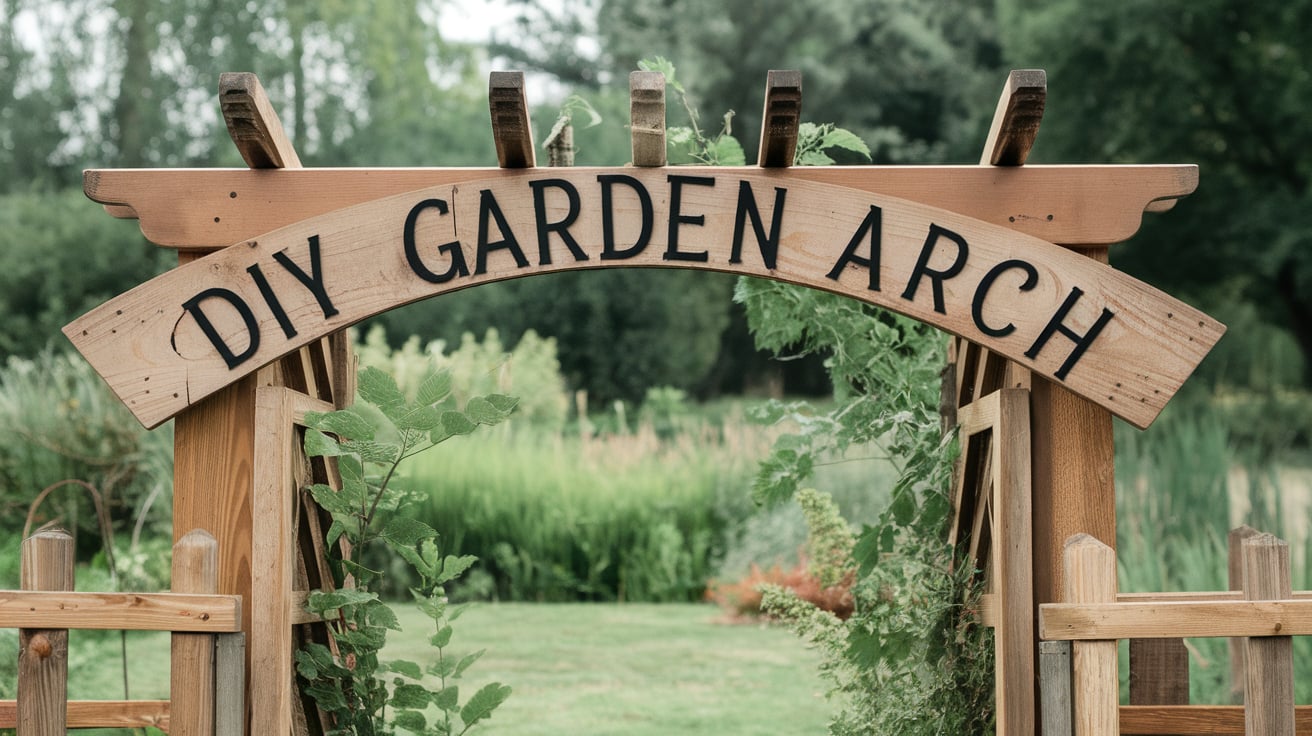The Ultimate Guide to Bluestone Patios: Everything You Need to Know
Bluestone patios have become a favorite choice for homeowners looking to enhance their outdoor spaces. These stunning additions offer a perfect blend of natural beauty and durability.
Bluestone, with its rich colors and unique textures, creates an eye-catching surface that complements any landscape design.
From cozy backyard retreats to expansive entertainment areas, bluestone patios provide a versatile foundation for outdoor living.
Their timeless appeal ensures they never go out of style, making them a wise investment for your home.
In this guide, we’ll walk you through everything you need to know about bluestone patios, from selection to installation and maintenance.
Whether planning a new patio or upgrading an existing one, you’ll find valuable insights to help you make informed decisions.
What Is Bluestone
Bluestone is a natural stone used for various outdoor applications, including patios. It’s a type of sedimentary rock, typically a dense sandstone or limestone.
Bluestone gets its name from its predominantly blue-gray color, though it can range from deep blue to greenish-gray.
This stone forms over millions of years as layers of sediment compress under intense pressure.
Quarries in the northeastern United States, particularly New York and Pennsylvania, produce high-quality bluestone.
Different Types of Bluestone
| Type | Surface Finish | Shape | Appearance | Cost (per sq. ft.) |
|---|---|---|---|---|
| Thermal Bluestone | Smooth, consistent | Uniform squares/rectangles | Sleek, flat, and even | $10 – $20 |
| Natural Cleft Bluestone | Textured, uneven | Irregular shapes or rectangles | Rough, natural look with variations | $8 – $18 |
| Irregular Bluestone | Natural, textured | Random, irregular shapes | Organic, irregular, free-form | $6 – $15 |
| Cut Bluestone | Smooth or slightly textured | Uniform squares/rectangles | Clean, precise lines | $12 – $25 |
| Tumbled Bluestone | Soft, weathered | Softened edges, uniform shapes | Aged, antique look with softened edges | $15 – $30 |
| Pennsylvania Bluestone | Varies: smooth or textured | Full-range or blue-gray colors | Earth tones (full-range) or blue-gray | $10 – $20 |
Looking to source beautiful paving stones similar to those listed above? Explore a curated selection of outdoor pavers and tiles that offer the same durability and style flexibility, perfect for any bluestone-inspired patio design.
Advantages and Drawbacks of Bluestone Patios
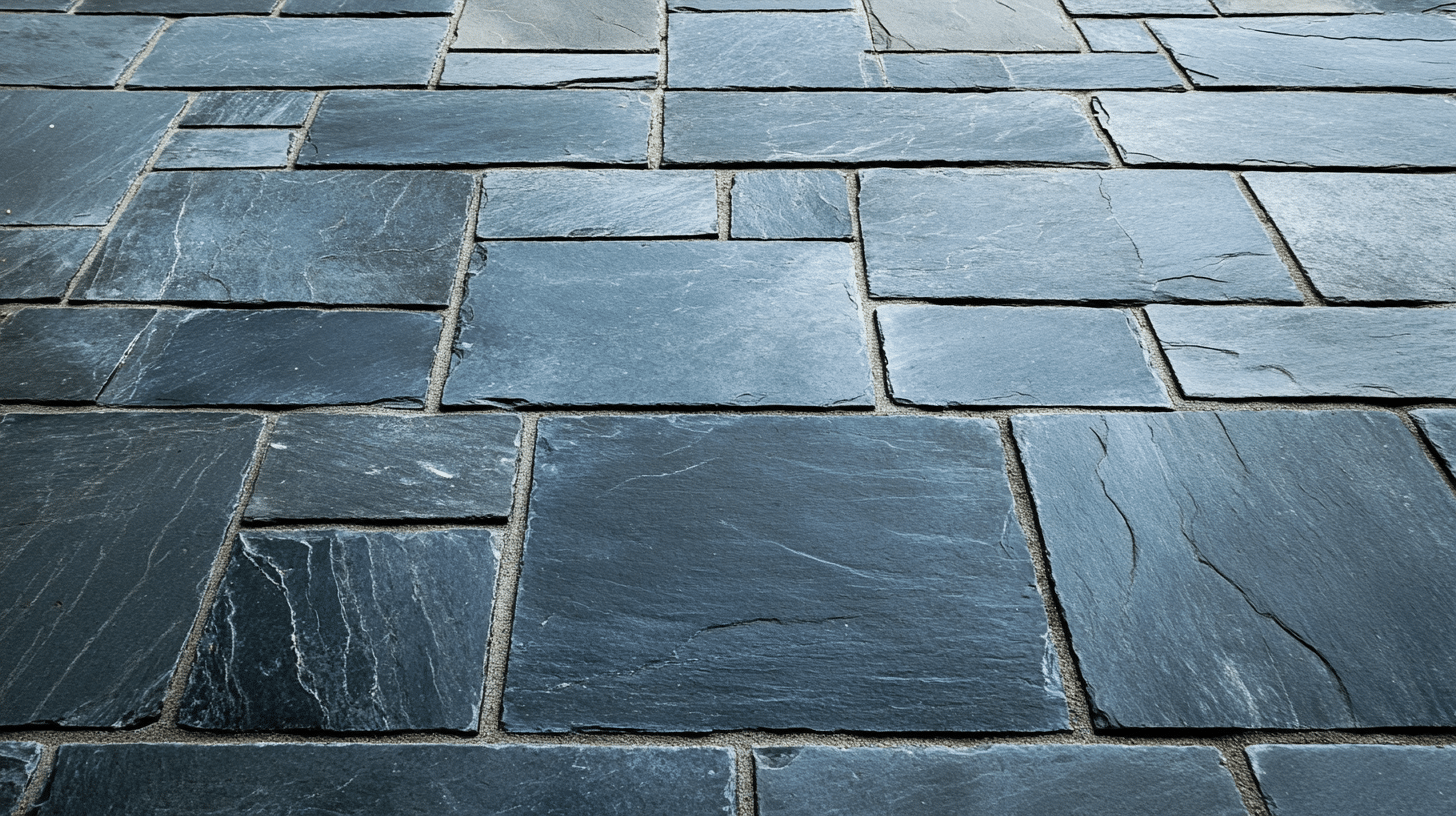
Bluestone patios are a popular choice for outdoor spaces due to their natural beauty and durability.
However, like any material, bluestone has its pros and cons. Here’s a breakdown of the advantages and drawbacks of using bluestone for patios:
Advantages of Bluestone Patios
- Durability: Bluestone is a highly durable natural stone that can withstand heavy foot traffic, weather, and wear over time. It is resistant to cracking, chipping, and breaking, making it ideal for patios in various climates.
- Natural Beauty: The unique colors and textures of bluestone create an attractive, natural look for outdoor spaces.
- Versatility: Bluestone comes in various shapes, sizes, and finishes, including thermal, natural cleft, and irregular (flagstone). This makes it suitable for both formal and informal patio designs.
- Slip Resistance: Bluestone’s textured surface, especially in natural cleft or thermal finishes, provides excellent slip resistance, making it safe for areas that may get wet, such as pool decks or patios exposed to rain.
- Weather Resistance: Bluestone is frost-resistant and can handle extreme temperature changes, which prevents it from expanding and contracting, thereby minimizing the risk of cracks in freezing climates.
- Low Maintenance: Bluestone requires relatively low maintenance. Regular sweeping and occasional power washing can keep the patio clean and well-maintained.
Drawbacks of Bluestone Patios
- Cost: Bluestone is more expensive than other patio materials like concrete or gravel. The price of the stone itself, along with professional installation costs, can make it a more costly investment.
- Heat Retention: While generally cool, dark-colored bluestone can retain heat in direct sunlight, potentially making the surface uncomfortable on very hot days.
- Color Fading: Over time, the rich blue-gray tones of bluestone can fade due to exposure to UV rays and weather conditions. Sealing the stone can help protect its color, but regular maintenance may be required to keep the patio looking vibrant.
- Porosity: Bluestone is porous, which can absorb water and other liquids, possibly leading to staining if not properly sealed. This is especially important for patios exposed to spills, like dining areas or near pools.
- Surface Irregularities: Natural cleft bluestone can have an uneven surface, which may not be ideal for furniture placement or accessibility.
Comparison of Bluestone with Other Patio Materials
| Feature | Bluestone | Concrete | Pavers | Flagstone | Brick | Gravel |
|---|---|---|---|---|---|---|
| Durability | High | High | Very High | High | Moderate | Moderate |
| Appearance | Natural, rustic finish | Plain or customizable | Uniform or patterned | Natural, irregular | Classic, traditional | Rustic, casual |
| Color Options | Limited (blue-gray) | Wide range | Wide range | Earth tones, natural | Red, brown, earth tones | Neutral (grays, browns) |
| Maintenance | Low to Moderate | Low | Low to Moderate | Moderate | Low to Moderate | Low |
| Slip Resistance | High | Low to Moderate | High | High | Moderate | High |
| Lifespan | 50-100 years | 25-50 years | 50-100 years | 50-100 years | 100+ years | 10-20 years |
| Weather Resistance | Excellent (frost-resistant) | Good | Excellent | Excellent | Excellent | Moderate |
| Sustainability | Natural, eco-friendly | Artificial, not eco-friendly | Varies based on material | Natural, eco-friendly | Natural, eco-friendly | Natural, eco-friendly |
| Installation Difficulty | Moderate | Easy | Easy to Moderate | Moderate to High | Easy | Very Easy |
| Cost (per sq. ft.) | $10-$30 | $5-$15 | $8-$25 | $15-$30 | $8-$20 | $1-$5 |
Step-By-Step Guide to Installing a Bluestone Patio
Tools Table for Bluestone Patio Installation
| Tool/Material | Purpose |
|---|---|
| Bluestone | The main material used for the patio surface. |
| Pack Material (LOM) | Good draining material placed under the patio to prevent water retention and frost heaving. |
| Stone Dust | A base material mixed with Portland cement to create a solid surface. |
| Portland Cement | Mixed with stone dust to create a stiff, durable base for the bluestone. |
| Chalk Reel | Used to mark out straight lines for the patio layout. |
| Rubber Mallet | Used to tap the bluestone slabs into place securely. |
| Plate Compactor | Rental tool used to tamp down the pack material for a solid base. |
| 4-Foot Level | Ensures the bluestone slabs are level for a smooth surface. |
| Pointed Trowel | Used to smooth the cement setting base under the bluestone. |
| Wheelbarrow | Used for mixing and transporting the stone dust and cement mixture. |
| Shovel | For spreading and moving the cement and pack material. |
| Rake | Used to smooth out the pack material evenly before laying the bluestone. |
| Tapping Mallet | Used to tap the stones into place securely. |
Step 1 Prepare the Base
- Spread several inches of pack material (LOM) across the patio area and smooth it with a rake.
- Compact the base firmly using a plate compactor to create a solid foundation.
Step 2 Mix the Cement Setting Base
- Mix seven parts of stone dust with one part of Portland cement in a wheelbarrow, adding just enough water to hydrate the mixture.
- Ensure the mixture is workable for spreading and stable enough to hold the bluestone slabs.
Step 3 Spread the Cement Mixture
- Apply enough of the cement mixture to cover the area for setting three to four stones.
- Use a pointed trowel to smooth the mixture evenly, ensuring an even 4-inch-thick layer.
Step 4 Lay and Secure the Bluestone
- Set the bluestone slabs onto the cement base and gently tap them into place with a rubber mallet.
- Ensure that each stone sits securely and evenly on the base.
Step 5 Ensure Slope and Level
- Continue laying stones while maintaining a slight slope away from the house for water drainage.
- Use a 4-foot level to check that the patio remains even, adjusting stones as needed.
Different Styles of Bluestone Patios
Bluestone patios can be designed in several distinct styles depending on the cut, layout, and pattern of the stone. These styles allow for a wide range of aesthetics, from formal and structured to rustic and natural.
Here are some of the most popular bluestone patio styles:
1. Random Irregular (Flagstone) Style

This style uses irregularly shaped pieces of bluestone, resulting in a natural, random pattern when laid out. The stones are fit together like a puzzle, with varying sizes and shapes.
- Best For: Rustic, natural, or cottage-style patios.
2. Geometric/Dimensional Style
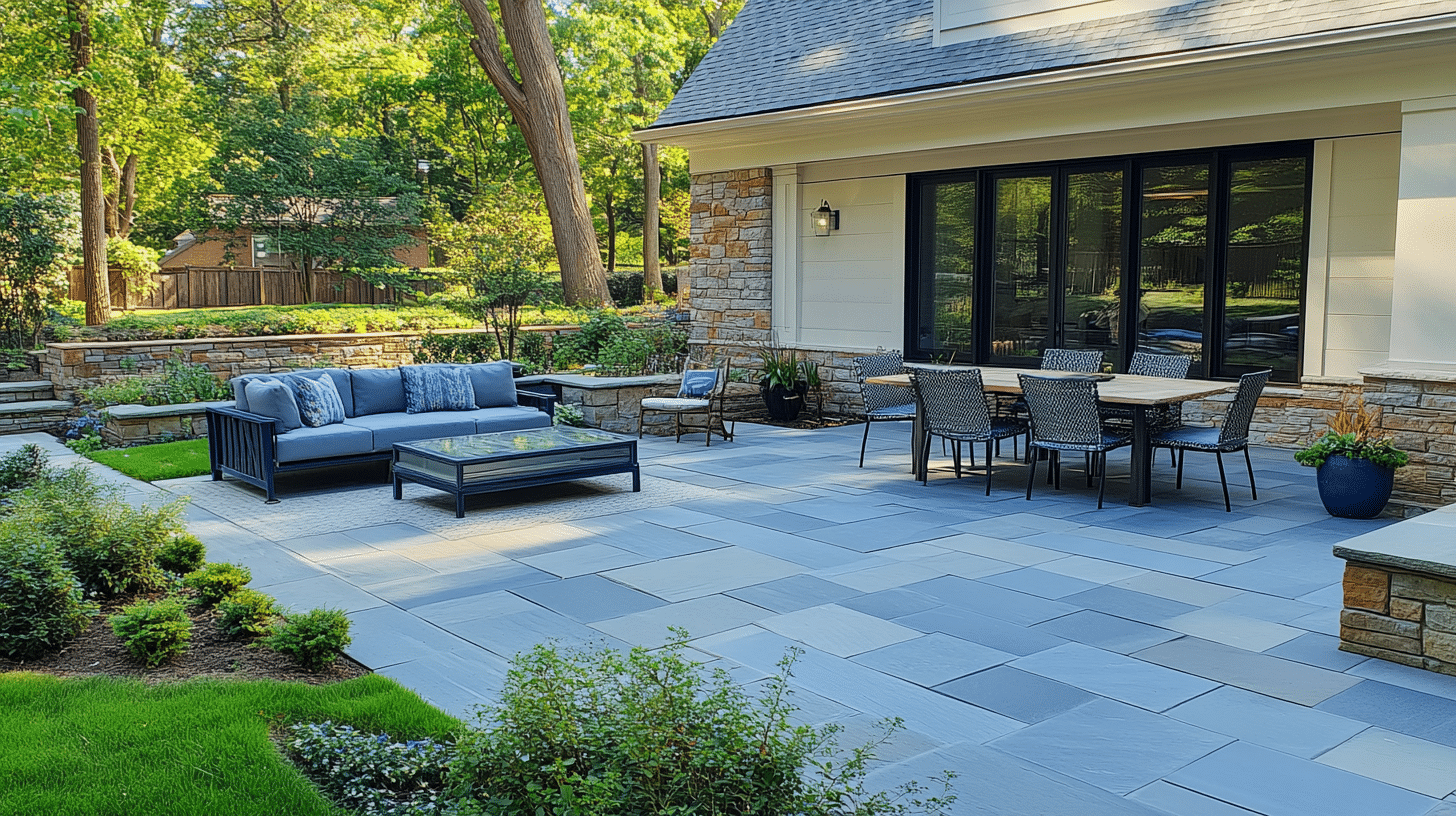
Bluestone is cut into regular geometric shapes such as squares and rectangles. These stones are arranged in a clean, structured layout, often in patterns like a grid or running bond.
- Best For: Contemporary, modern, or formal landscapes.
3. Herringbone Pattern

In this pattern, rectangular stones are laid at 45-degree angles to form a V-shaped, zigzag pattern. This is a more intricate and visually striking layout.
- Best For: Traditional, formal, or eclectic outdoor spaces.
4. French Pattern (Ashlar Pattern)
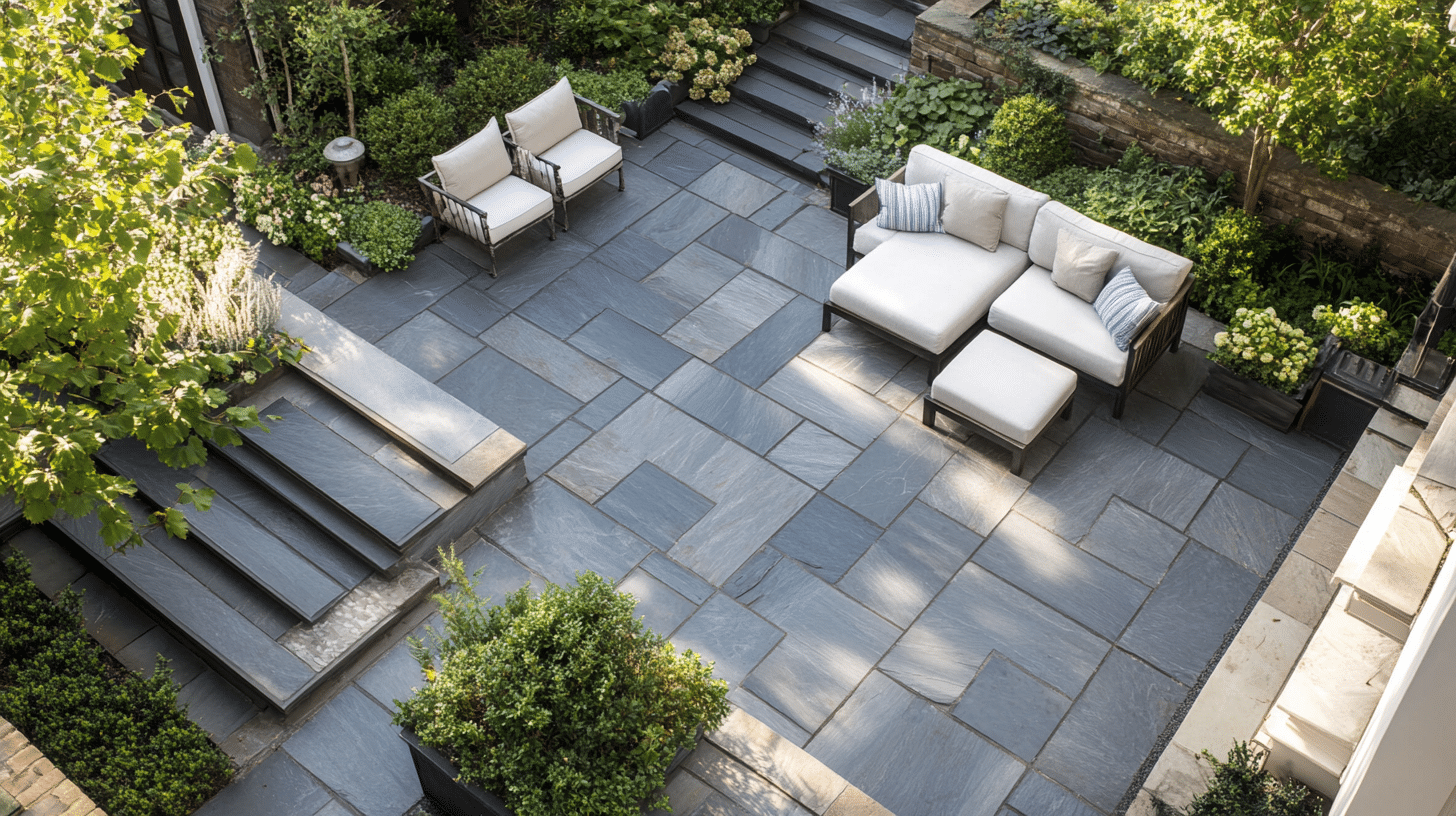
This layout combines squares and rectangles of various sizes arranged in a repeated pattern. The stones are laid in an asymmetrical yet structured way.
- Best For: Traditional or European-inspired patios.
5. Circular or Radial Pattern
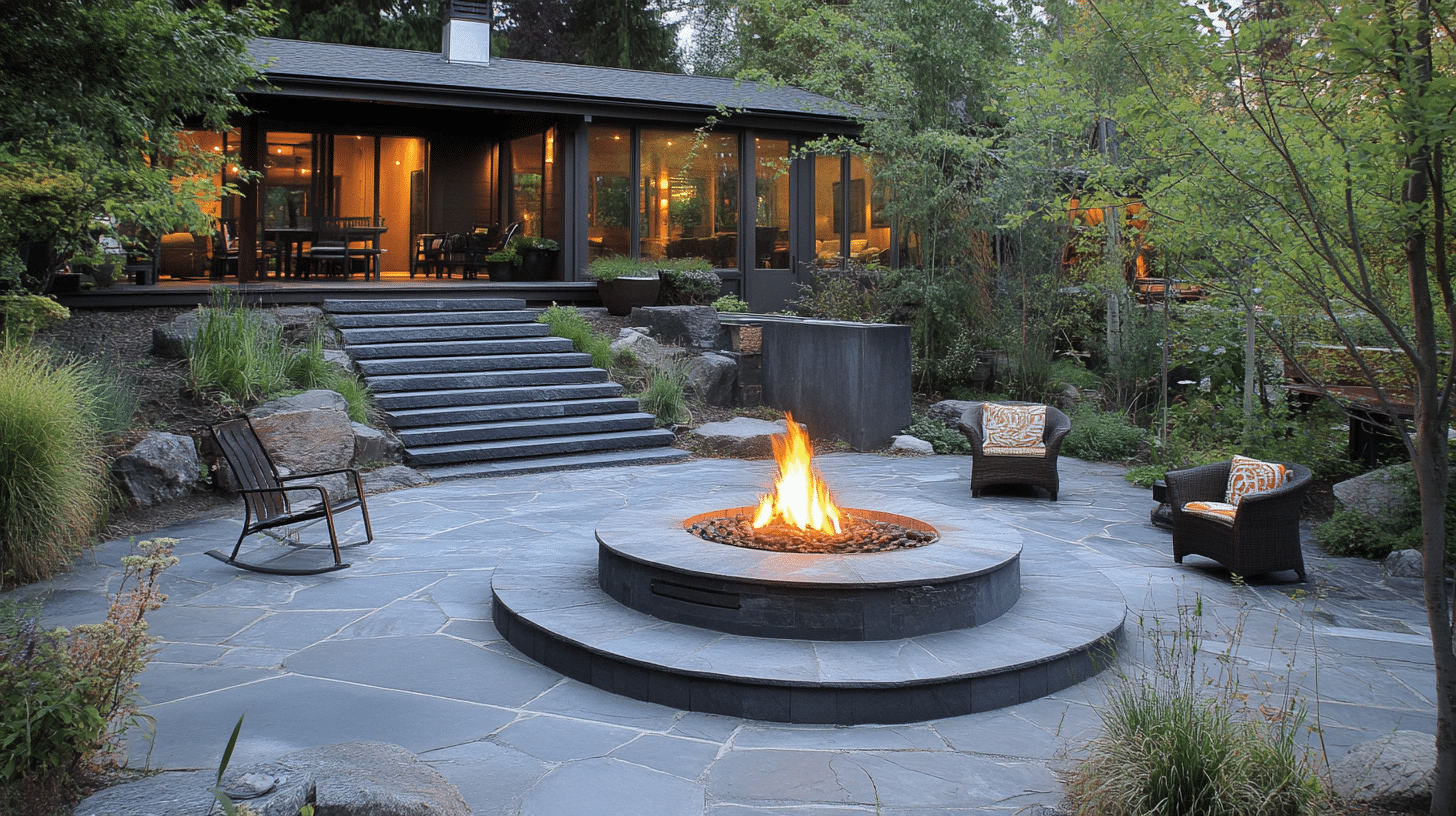
This style involves arranging the bluestone in concentric circles or radial designs, often around a focal point like a fire pit or a fountain.
- Best For: Central gathering areas or patios with a focal point.
6. Stepping Stone Style
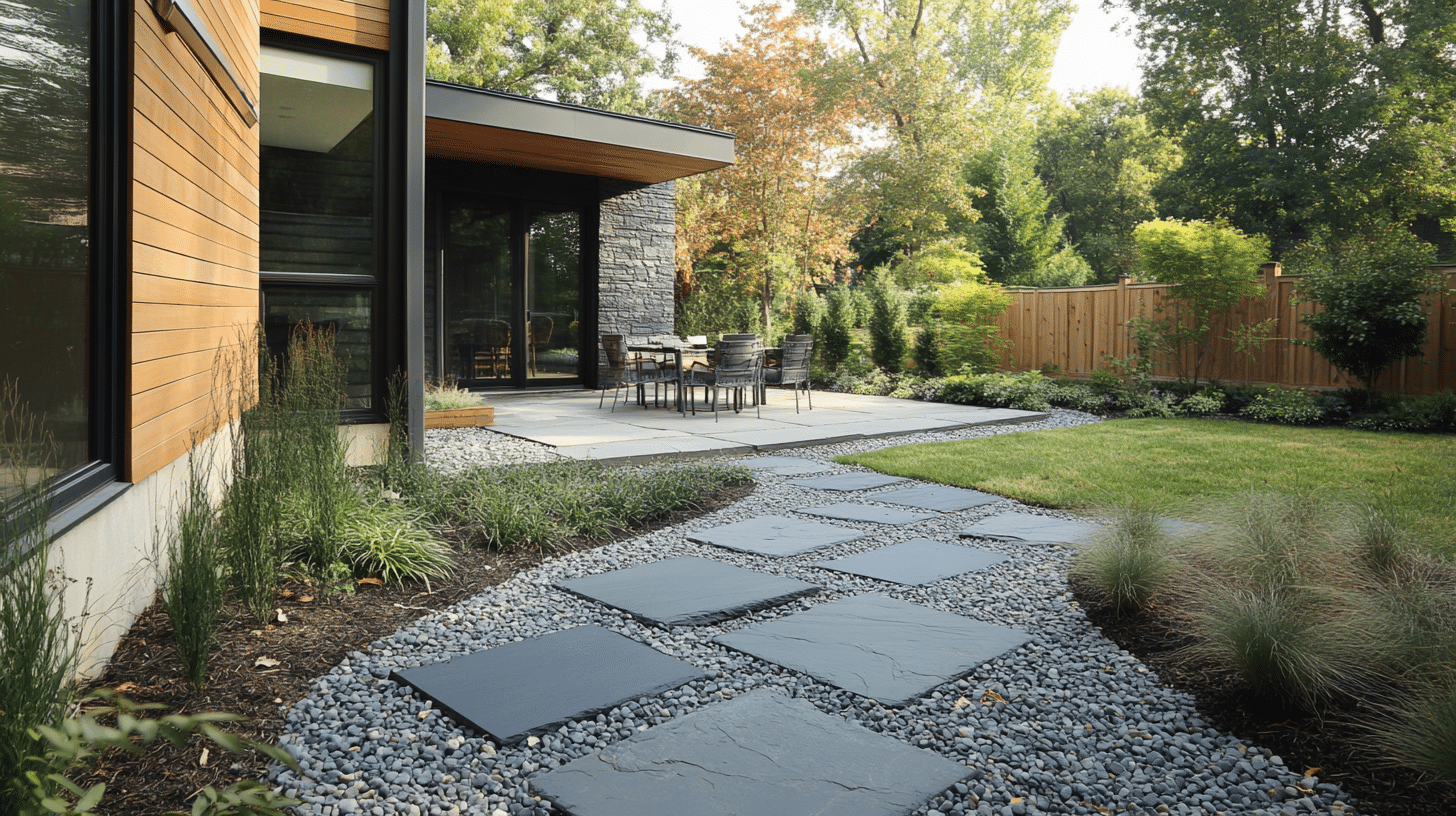
Large, individual bluestone slabs are placed as stepping stones across gravel, grass, or mulch. This style is often used for walkways but can be extended into a patio design.
- Best For: Garden paths, informal patios, or transitional spaces.
7. Mixed Materials Style
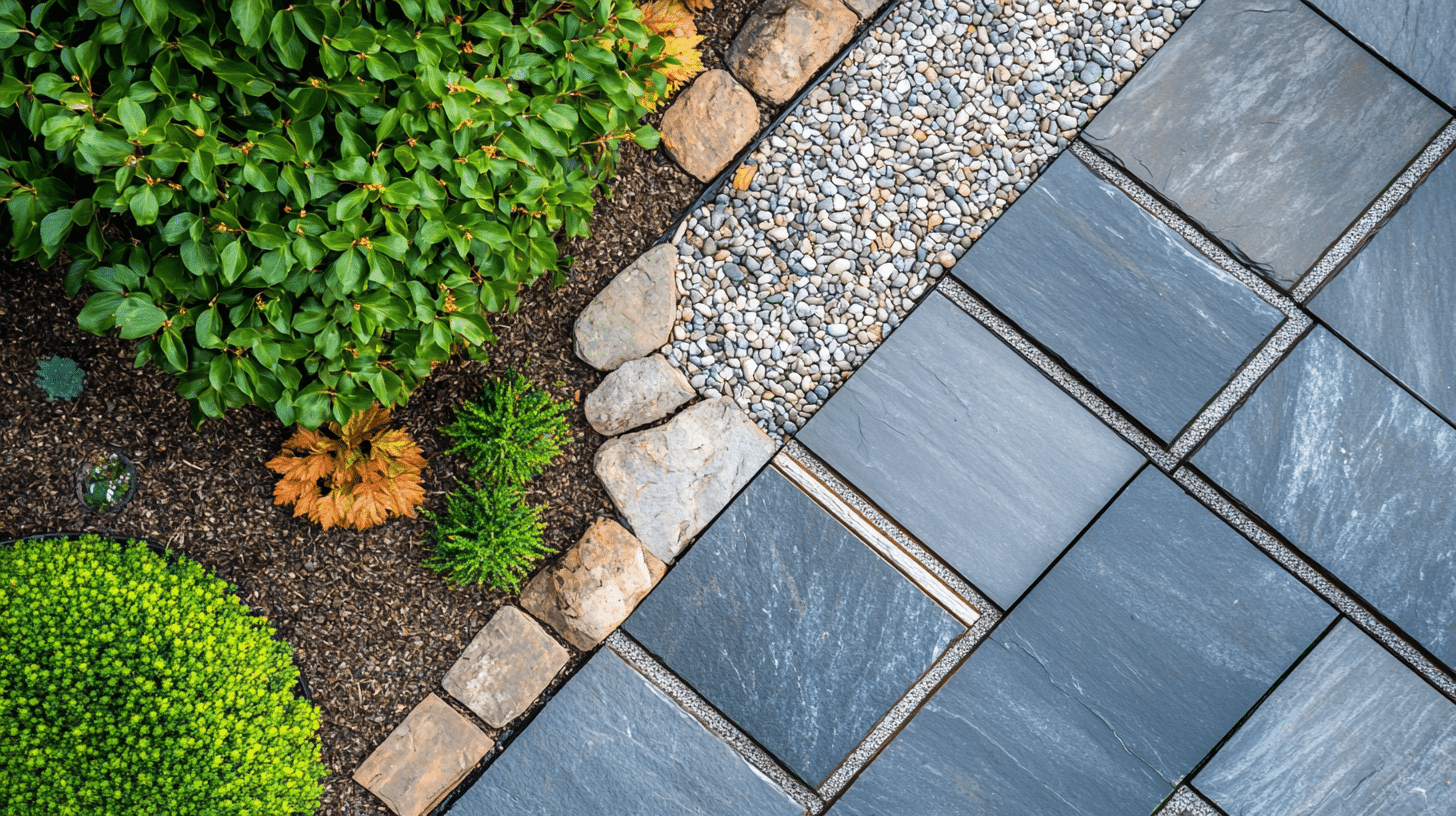
This style combines bluestone with other materials, such as brick, gravel, or concrete. Bluestone can be used as the main material with accents or borders of different materials for contrast.
- Best For: Eclectic or custom-designed patios.
Essential Cleaning and Care Tips for Your Bluestone Patio
- Regular Cleaning: Sweep your patio weekly to remove dirt and debris. For routine cleaning, use a mild soap and water solution. Once or twice a year, consider pressure washing on a low setting to deep clean without damaging the stone.
- Stain Management: For tough stains, make a paste using baking soda and water. Apply it to the stain, let it sit briefly, then scrub gently and rinse. To prevent future stains, apply a quality stone sealer every 2-3 years, following the manufacturer’s instructions.
- Seasonal Care: In winter, avoid using de-icing salts, as they can damage the surface. Instead, use sand for traction in icy areas. During other seasons, promptly remove any weeds growing between stones to prevent damage to the patio structure.
- Structural Maintenance: Use felt pads under furniture legs to prevent scratching. If you notice loose or missing mortar between stones, repair it to maintain the patio’s integrity. Consider having a professional inspect your patio every few years to address potential issues early.
By following these maintenance and cleaning tips, you can preserve the natural beauty of your bluestone patio for years to come. Remember, consistent care is key to maintaining your outdoor space’s appeal and longevity.
Conclusion
Bluestone patios offer a unique blend of beauty, durability, and versatility for your outdoor space.
From their natural charm to various design options, bluestones can elevate any backyard. While the initial cost may be higher, the long-lasting appeal and low maintenance make it a smart investment.
Whether you prefer classic or modern styles, there’s a bluestone patio design for you.
As you plan your outdoor project, consider the timeless elegance of bluestone. It withstands harsh weather, ages gracefully, and is environmentally friendly.
Ready to transform your outdoor living area?
Contact a local landscaper for a personalized quote, or download our free bluestone patio design guide to explore more options. Your perfect outdoor retreat is just a stone’s throw away!
Frequently Asked Questions
Is Bluestone Suitable for Cold Climates?
Yes, bluestone is suitable for cold climates. It’s dense and durable, resisting freeze-thaw cycles well.
How Long Does a Bluestone Patio Last?
A well-installed and maintained bluestone patio can last 50 years or more. Regular cleaning and occasional sealing can help extend its lifespan even further.
Can Bluestone be Used Around Pools?
Yes, bluestone can be used around pools. It provides good traction when wet. Choose a thermal or flamed finish for better slip resistance. Seal to protect from chemicals.
How Does Bluestone Age Over Time?
Bluestone ages gracefully, developing a subtle patina. Some types might slightly fade or weather, adding character. Regular cleaning and sealing help maintain its appearance over time.
Is Bluestone Environmentally Friendly?
Yes, bluestone is environmentally friendly. It’s a natural stone requiring minimal processing. It’s durable, long-lasting, recyclable, and doesn’t release harmful chemicals into the environment.

